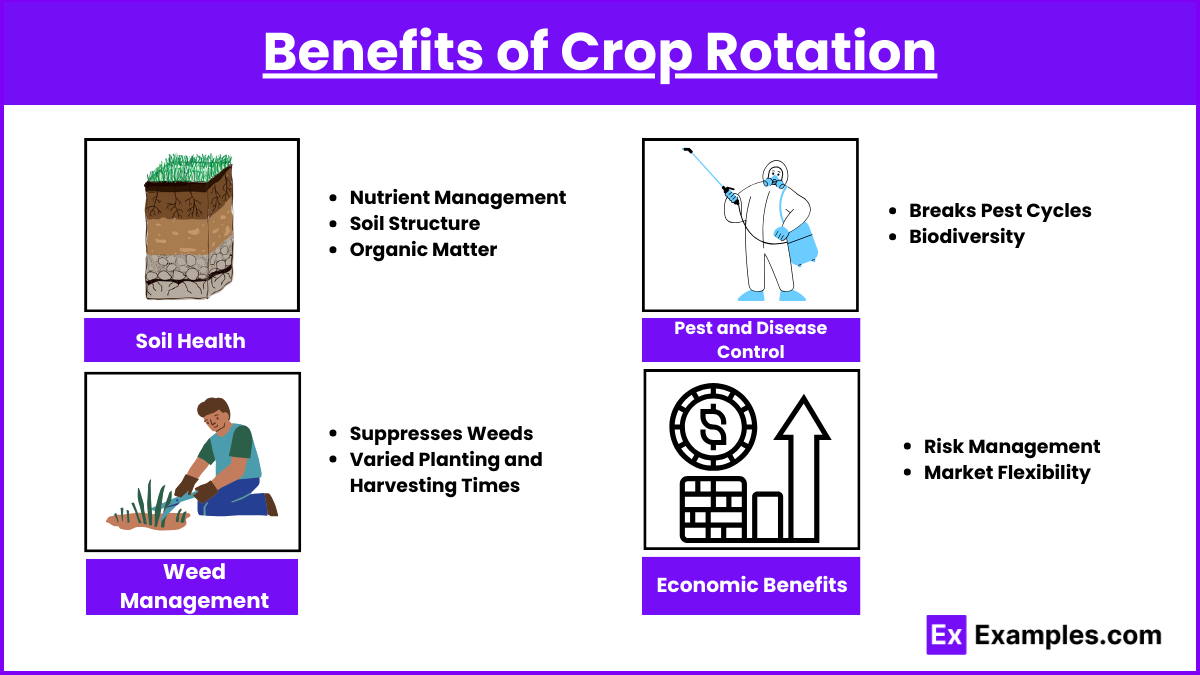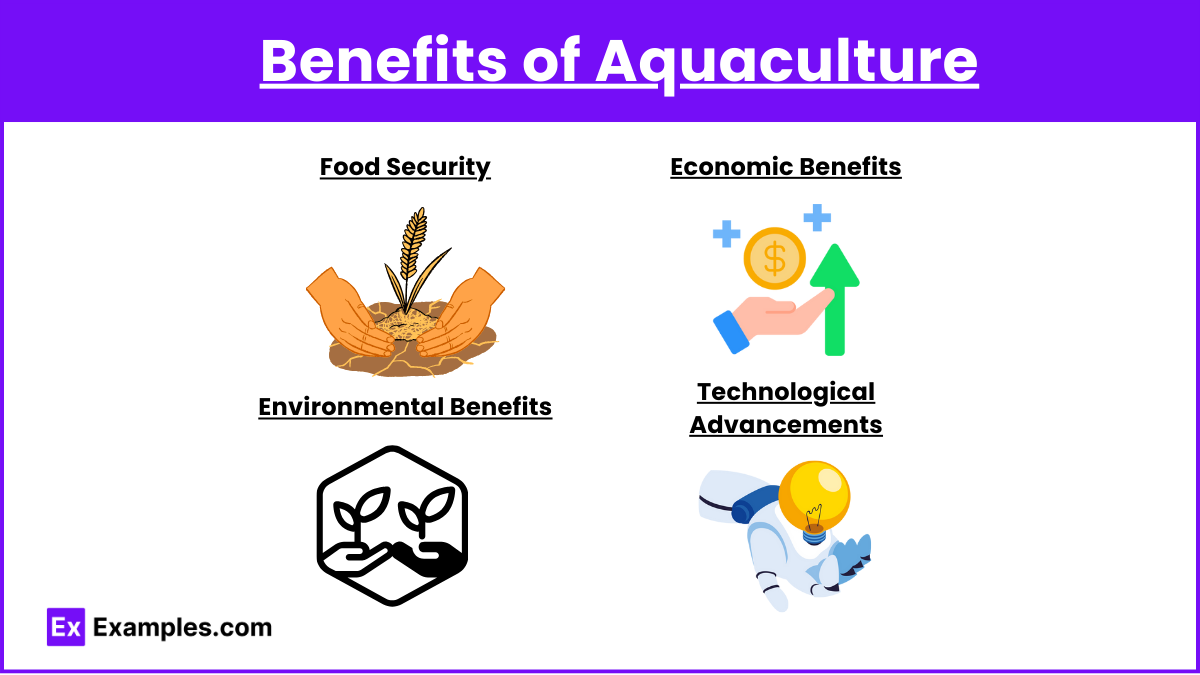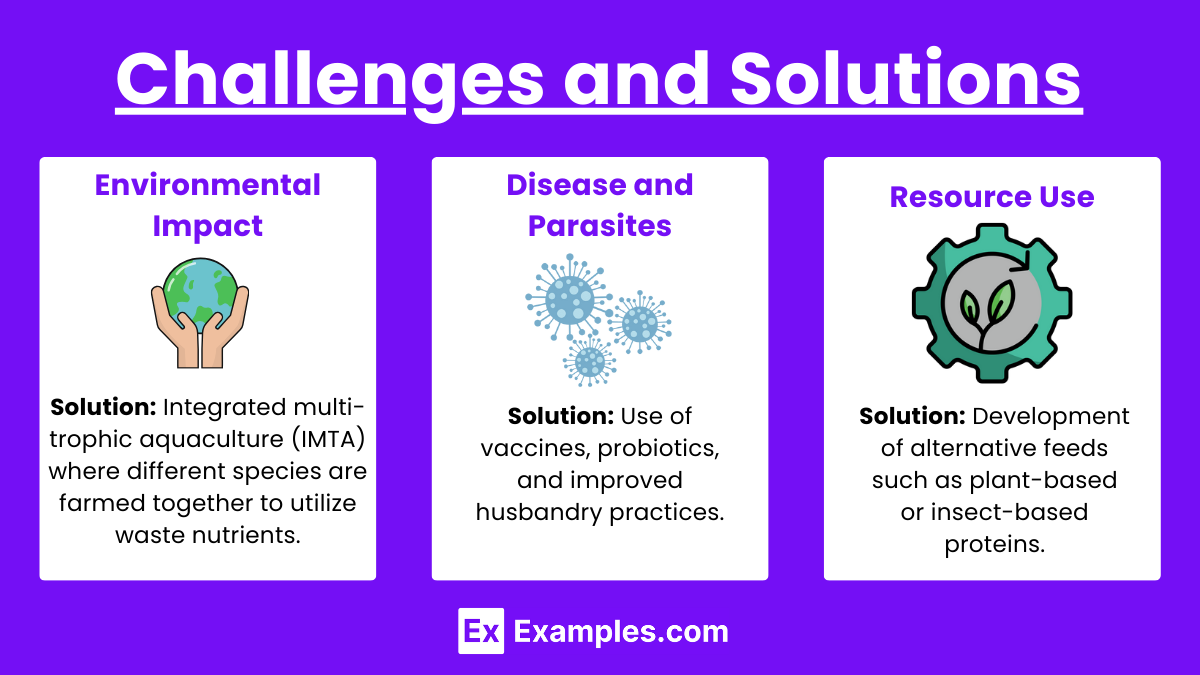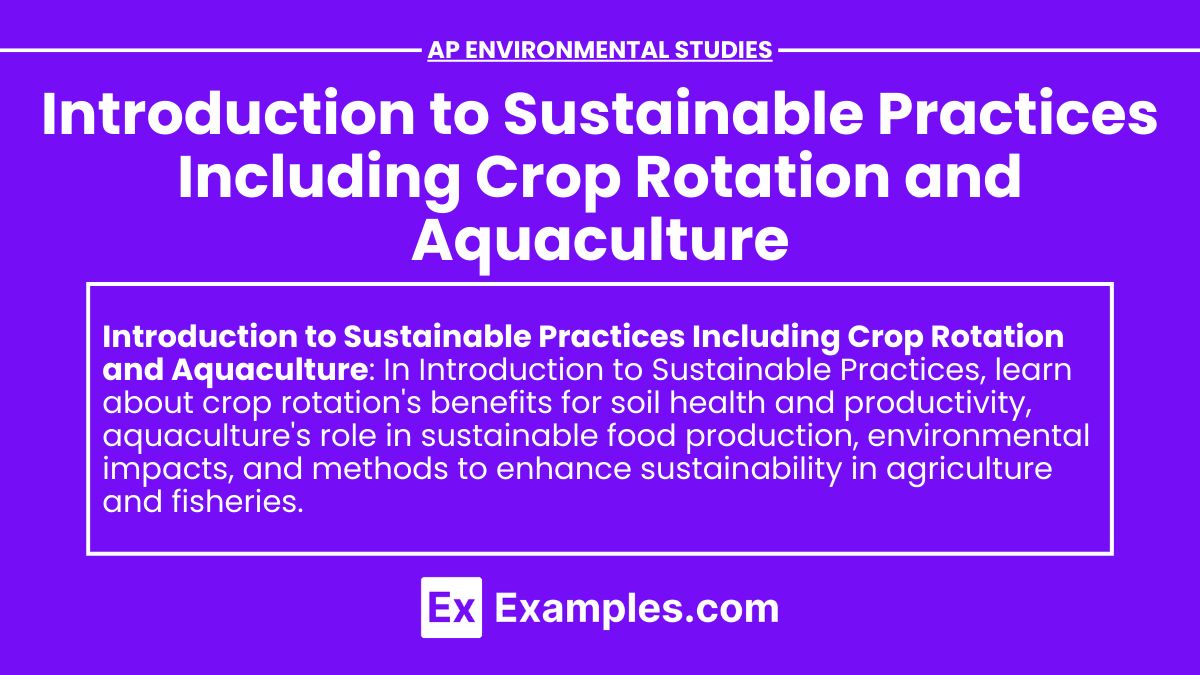In AP Environmental Studies, exploring sustainable practices such as crop rotation and aquaculture is crucial for understanding how agriculture can harmonize with ecology and enhance the health of ecosystems. These methods support biodiversity, reduce environmental degradation, and contribute to the resilience of the biosphere. By rotating crops, soil fertility is maintained and pest cycles are disrupted, while aquaculture provides a sustainable source of aquatic products, minimizing the impact on wild populations and promoting ecosystem balance.
Free AP Environmental Science Practice Test
Learning Objectives
By studying sustainable practices like crop rotation and aquaculture, students will understand how these methods impact organisms, mitigate climate changes, and support the health of flora and fauna. They will learn to evaluate the environmental benefits of rotating crops to improve soil quality and reduce pests, and how aquaculture provides a sustainable food source. The course will emphasize the importance of integrating these practices to enhance agricultural productivity while preserving ecosystem integrity.
Sustainable Practices in Agriculture
Definition: Sustainable agricultural practices are methods of farming that meet the needs of the present without compromising the ability of future generations to meet their own needs. These practices aim to maintain and improve the health of the environment, economic profitability, and social and economic equity.
Crop Rotation
Definition: Crop rotation is the practice of growing different types of crops in the same area in sequential seasons. It helps improve soil health, reduce pest and disease problems, and increase crop yield.
Benefits of Crop Rotation

Soil Health:
Nutrient Management: Different crops have different nutrient requirements and replenishment rates. For example, legumes can fix atmospheric nitrogen, enriching the soil for future crops.
Soil Structure: Alternating deep-rooted and shallow-rooted plants improves soil structure and reduces erosion.
Organic Matter: Crop residues add organic matter to the soil, improving its fertility and water-holding capacity.
Pest and Disease Control:
Breaks Pest Cycles: Rotating crops disrupts the life cycles of pests and diseases that are specific to certain crops.
Biodiversity: Increases plant diversity, making it harder for pests and diseases to become established.
Weed Management:
Suppresses Weeds: Different crops compete with weeds in various ways, reducing their prevalence.
Varied Planting and Harvesting Times: Changing the planting and harvesting schedule can disrupt the life cycles of weeds.
Economic Benefits:
Risk Management: Diversifying crops reduces the risk of total crop failure.
Market Flexibility: Farmers can respond to market demands more flexibly.
Examples of Crop Rotation Systems:
Three-Field System: One field is planted with a winter crop, the second with a spring crop, and the third is left fallow.
Four-Field System: Includes a sequence of cereals, legumes, root crops, and fallow or cover crops.
Implementation:
Planning: Farmers need to plan which crops to rotate and in what sequence, considering factors such as soil type, climate, and market demand.
Record Keeping: Maintaining records of past rotations to inform future planning.
Aquaculture
Definition: Aquaculture, also known as aquafarming, is the cultivation of aquatic organisms such as fish, crustaceans, mollusks, and aquatic plants under controlled conditions.
Types of Aquaculture:
Mariculture: Cultivation of marine organisms in the ocean or in controlled environments.
Freshwater Aquaculture: Cultivation of freshwater species in ponds, rivers, or other freshwater bodies.
Benefits of Aquaculture

Food Security:
Protein Source: Provides a sustainable source of high-quality protein.
Supply Stability: Reduces the pressure on wild fish populations, helping to stabilize supply.
Economic Benefits:
Employment: Creates jobs in farming, processing, and related industries.
Income Generation: Provides income for small-scale and commercial farmers.
Environmental Benefits:
Resource Efficiency: Efficient use of feed and water resources compared to terrestrial livestock farming.
Ecosystem Services: Can provide services such as nutrient recycling and habitat provision.
Technological Advancements:
Innovations: Advances in breeding, feeding, and disease management have improved productivity and sustainability.
Challenges and Solutions

Environmental Impact:
Waste Management: Proper management of waste to prevent water pollution.
Habitat Degradation: Ensuring farming practices do not harm surrounding ecosystems.
Solution: Integrated multi-trophic aquaculture (IMTA) where different species are farmed together to utilize waste nutrients.
Disease and Parasites:
Health Management: Monitoring and managing health to prevent outbreaks.
Solution: Use of vaccines, probiotics, and improved husbandry practices.
Resource Use:
Feed Sustainability: Reducing reliance on wild fish stocks for feed.
Solution: Development of alternative feeds such as plant-based or insect-based proteins.
Examples of Sustainable Aquaculture Practices
Recirculating Aquaculture Systems (RAS): Closed systems that recycle water and minimize environmental impact.
Polyculture: Farming multiple species together to mimic natural ecosystems and enhance productivity.
Organic Aquaculture: Practices that follow organic standards, avoiding synthetic chemicals and promoting natural growth processes.


